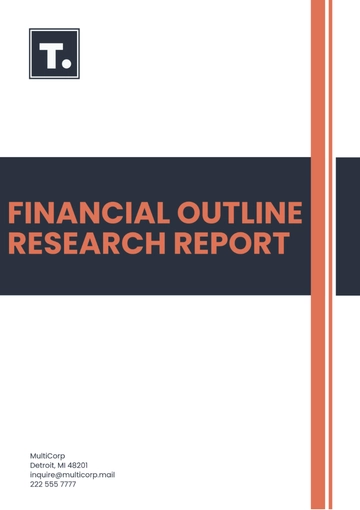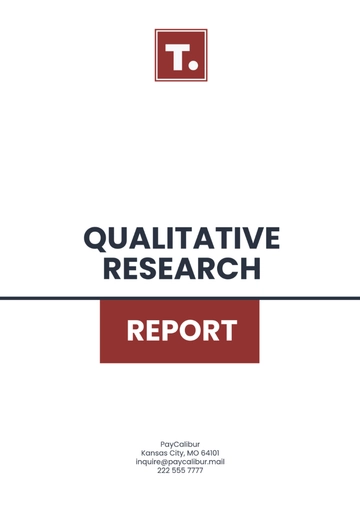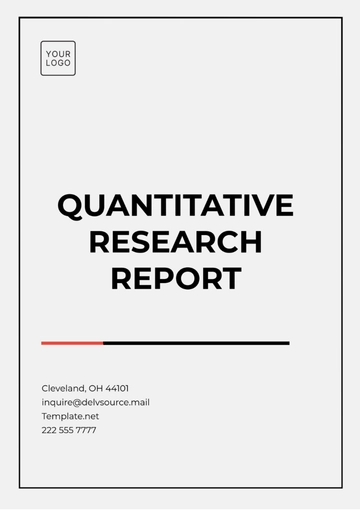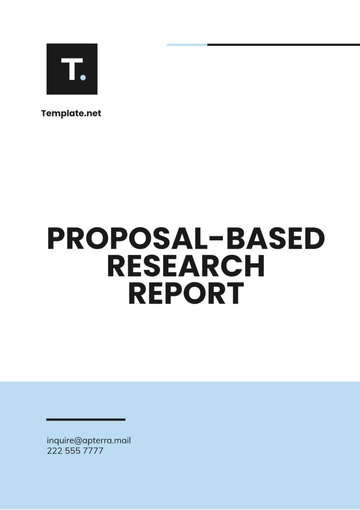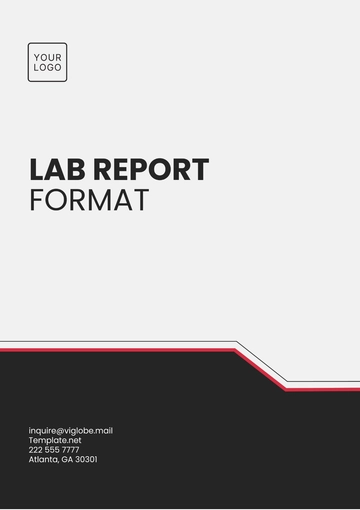Free Startup Market Research Report
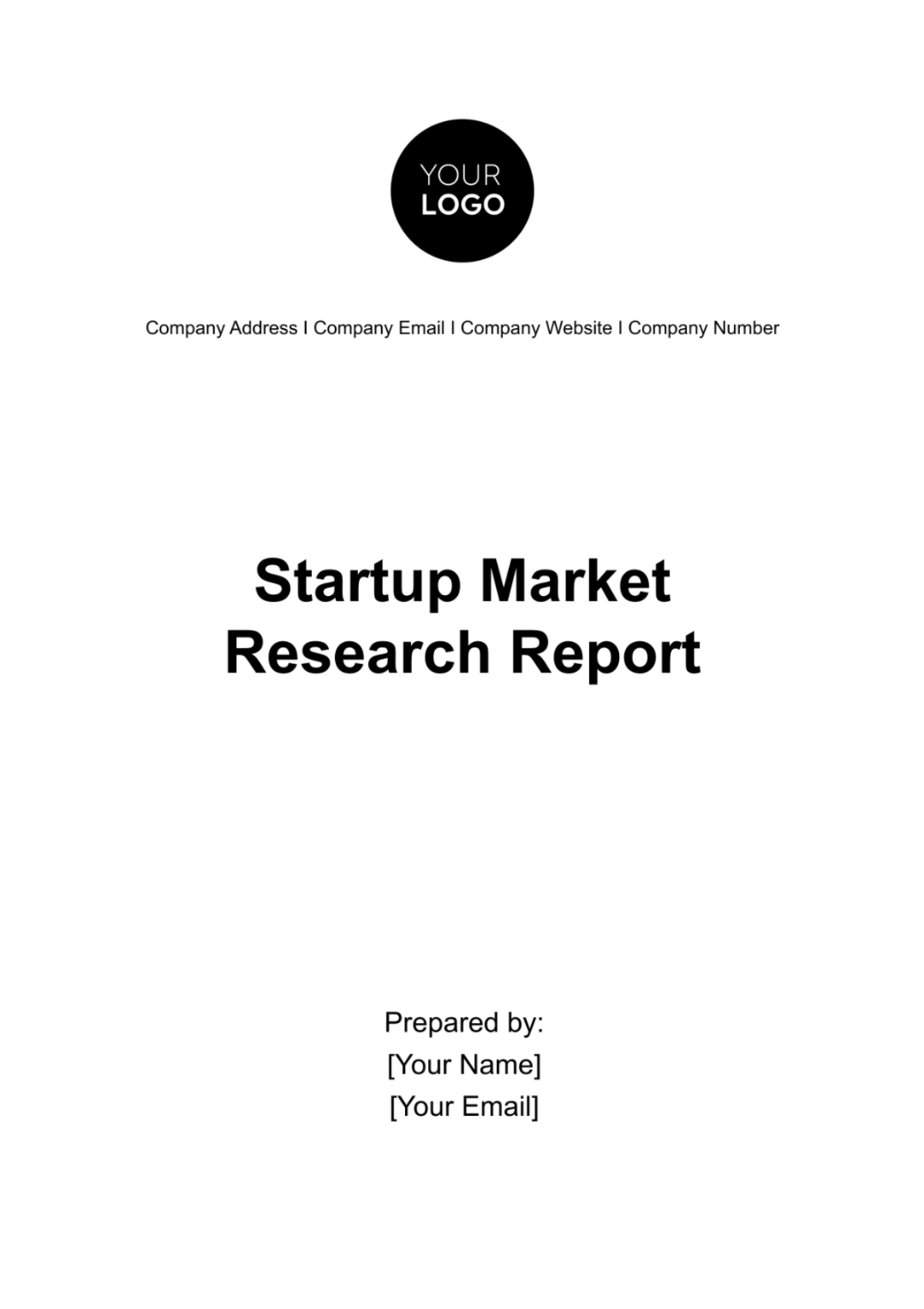
I. Executive Summary
[Your Company Name] introduces a groundbreaking [product/service] aimed at [solving a significant problem] within the [specific industry]. Our comprehensive market research uncovers a significant demand for [product/service type], highlighting an untapped market with considerable growth potential. The findings reveal a unique opportunity for [Your Company Name] to establish a strong market presence by offering [key product features or service advantages] that distinctly meet the needs and preferences of our target demographic.
Key insights suggest a strategic emphasis on [specific market segment or feature], leveraging our competitive edge in [technology, design, customer service, etc.]. Additionally, addressing the notable market gap in [specific area] could propel [Your Company Name] to the forefront of the [industry] industry. Based on these findings, we recommend a targeted marketing strategy, a competitive pricing model, and a focus on innovation to secure a dominant market position.
II. Introduction
This report aims to provide [Your Company Name] with an in-depth analysis of the [industry] market, focusing on competitive dynamics, consumer behavior, and emerging trends. Utilizing a mix of qualitative and quantitative research methods, including industry reports, surveys, and competitor analysis, this document offers a comprehensive overview of the market landscape. The insights garnered will guide strategic decisions, from product development to marketing strategies, ensuring [Your Company Name]'s successful market entry and growth.
III. Startup Overview
Established in [Year], [Your Company Name] seeks to revolutionize the [industry] with its [product/service], designed to [unique value proposition]. Currently in the [development/launch] phase, our mission is to [mission statement], addressing [specific need or problem] with innovative solutions. The objectives of this market research are multifaceted, aiming to validate the market need for our offering, identify key customer segments, and carve out a strategic position within the competitive landscape.
IV. Industry Analysis
Overview of the Industry
The [industry name] is currently valued at $[Amount] billion, with projections indicating a growth to $[Amount] billion by [year], representing a CAGR of [percentage]%. This growth is fueled by [key drivers such as technological advancements, regulatory changes, consumer trends]. However, the industry also faces challenges, including [key challenges such as high entry barriers, regulatory compliance, competitive saturation].
SWOT ANALYSIS
Strengths: Robust growth potential, increasing consumer demand, and technological innovation. | Weaknesses: Market volatility, regulatory complexity, and high competition. |
Opportunities: Expansion into emerging markets, adoption of eco-friendly and sustainable practices, and strategic partnerships. | Threats: Economic downturns, rapid technology shifts, and new entrants disrupting the market. |
V. Market Analysis
Market Segmentation
Geographic: [Describe regions or areas where your product/service will be most relevant or in demand]
Demographic: [Describe the age, gender, income level, etc., of your target market]
Psychographic: [Lifestyle, values, and attitudes of your target customers]
Behavioral: [Purchasing behaviors, usage rate, brand loyalty, etc.]
Target Market Identification
Size: Estimated at [number] potential customers within [specific area or demographic].
Needs and Preferences: [Detail what drives your target market's buying decisions]
VI. Competitive Analysis
Competitor Name | Market Share | Strengths | Weaknesses |
|---|---|---|---|
Competitor A | 25% | Established brand, wide distribution network, strong R&D capabilities | Higher pricing, less focus on sustainability |
Competitor B | 20% | Competitive pricing, strong customer service | Limited product range, dependency on a single market |
Competitor C | 15% | Strong online presence, agile and innovative product development | Smaller scale, weaker brand recognition |
Comparative Analysis
[Your Company Name] stands out in the [industry] market with our [product/service], which introduces [unique feature or value proposition], setting us apart from our competitors. Unlike Competitor A, which focuses on innovation at a higher price point with less emphasis on sustainability, [Your Company Name] prioritizes eco-friendly solutions without compromising on quality or affordability. Our approach directly addresses the growing consumer demand for sustainable and responsible products, an area where Competitor B falls short due to their limited product range and focus. Furthermore, while Competitor C targets niche markets with innovative features, [Your Company Name]'s broad appeal and commitment to inclusivity ensure our [product/service] meets a wider range of customer needs.
Our competitive edge is further solidified by our [another distinguishing feature, e.g., superior customer service, more extensive distribution network, or a more aggressive pricing strategy], which not only enhances our market position but also builds a strong foundation for customer loyalty and brand recognition. By leveraging these strengths, [Your Company Name] is well-positioned to capture market share and establish a dominant presence in the [industry] industry.
This comparative analysis underscores the strategic advantages of [Your Company Name] over our competitors. By focusing on [key strategic focus, e.g., sustainability, affordability, and broad market appeal], we are not only addressing current market gaps but also setting new standards for innovation, quality, and customer satisfaction in the [industry] sector. Our unique value proposition, combined with strategic market positioning, places [Your Company Name] at the forefront of the industry, ready to meet and exceed the evolving needs and preferences of our customers.
VII. Customer Analysis
Our in-depth customer analysis has identified several key characteristics and behaviors within our target market. Our primary customer segment consists of [describe demographic, e.g., "young professionals aged 25-35 with a keen interest in sustainability and technology"]. These individuals exhibit a high degree of digital savviness, prioritize eco-friendly and ethical consumption, and are willing to pay a premium for products that align with their values.
Demographics: Our target customers are predominantly located in urban areas, with a balanced gender distribution and a median household income of [insert income range]. This demographic is highly educated, with over [percentage]% holding a bachelor's degree or higher.
Psychographics: Values such as sustainability, innovation, and quality drive purchasing decisions. This group is highly engaged with social issues and prefers brands that demonstrate social responsibility.
Buying Behavior: Our research indicates a preference for online shopping, with a significant emphasis on customer reviews and brand reputation influencing buying decisions. There is also a noticeable trend towards loyalty to brands that offer personalized experiences and engage with their customers through social media.
Understanding these characteristics allows [Your Company Name] to tailor our marketing strategies, product development, and customer service to meet and exceed these expectations, fostering loyalty and driving sales.
VIII. Product/Service Analysis
[Your Company Name]'s flagship product, [Product/Service Name], stands out in the market for its unique blend of [describe unique features, e.g., "cutting-edge technology and eco-friendly materials"]. This product/service is designed to not just meet the basic needs of our target market but to exceed their expectations by offering [describe benefits, e.g., "unparalleled user experience, exceptional durability, and a minimal environmental footprint"].
Comparison with Competitors: Unlike Competitor A's [Product A], which prioritizes innovation at the expense of affordability and sustainability, [Your Company Name]'s [Product/Service Name] offers competitive pricing without compromising on quality or ethical standards. Additionally, our product/service includes features such as [list unique features], which are not available in products offered by Competitors B and C.
Pricing Strategy: Our pricing model is designed to balance affordability with value creation, ensuring accessibility for our target demographic while reflecting the premium quality and sustainability of our offering.
Distribution Channels: [Your Company Name] leverages a multi-channel distribution strategy, combining online sales with select retail partnerships to maximize reach and convenience for our customers.
IX. Marketing Strategy
Our comprehensive marketing strategy is crafted to resonate with our target demographic's values and purchasing behaviors. Key components include:
Key Components | Details |
|---|---|
Digital Marketing | Utilizing SEO, content marketing, and targeted social media campaigns to engage with our audience where they spend most of their time online. |
Influencer Partnerships | Collaborating with influencers who align with our brand values to reach potential customers authentically and organically. |
Customer Engagement | Implementing loyalty programs and personalized marketing efforts to deepen relationships with existing customers and attract new ones. |
This multi-faceted approach ensures that [Your Company Name] effectively communicates the unique value of our [product/service], driving brand awareness, customer engagement, and sales.
X. Opportunities and Challenges
Opportunities for growth are abundant, particularly in [mention specific areas, e.g., "expanding our product line to include related products/services that address untapped needs within our target market"]. Additionally, the increasing global focus on sustainability presents an opportunity for [Your Company Name] to lead the market in eco-friendly innovations.
However, challenges such as intense competition from both established players and new entrants, rapidly changing consumer preferences, and the potential for supply chain disruptions pose significant risks. Strategic investments in R&D, marketing, and supply chain resilience are critical to navigating these challenges successfully.
XI. Financial Analysis
Our financial projections for the next [timeframe] are promising, with anticipated revenues reaching $[amount] based on our current pricing strategy and sales forecast. This projection is supported by a detailed cost analysis, highlighting key areas of investment such as [list major cost centers, e.g., "manufacturing, marketing, and R&D"].
Break-Even Analysis: [Your Company Name] is projected to reach its break-even point within [time period], after selling approximately [number] units of [Product/Service Name]. This milestone is achievable through our targeted marketing efforts and strategic pricing model, designed to maximize profit margins while ensuring market competitiveness.
XII. Recommendations and Strategic Insights
To capitalize on identified opportunities and mitigate potential challenges, [Your Company Name] should consider the following strategic recommendations:
Recommendations | Details |
|---|---|
Expand Product Line | Diversifying our product/service offerings to capture a larger share of the market and meet the broader needs of our target demographic. |
Enhance Digital Presence | Investing in our online platform and digital marketing efforts to strengthen brand awareness and customer engagement. |
Sustainability Initiatives | Further integrating sustainability into every aspect of our business operations to reinforce our brand values and appeal to environmentally conscious consumers. |
Implementing these strategies will position [Your Company Name] for sustained growth and success in the competitive [industry] landscape. By staying true to our core values and focusing on our target market's needs, we can build a loyal customer base and achieve long-term profitability.
XIII. Appendices
Data Sources: [List of data sources used in research]
Analysis Charts: Detailed charts and graphs illustrating market trends, competitive landscape, etc.
XIV. Conclusion
In conclusion, [Your Company Name] is well-positioned to enter the [industry] market, with a solid understanding of the competitive landscape, customer needs, and market trends. By following the strategic recommendations outlined in this report, [Your Company Name] can achieve significant market penetration and long-term success.
- 100% Customizable, free editor
- Access 1 Million+ Templates, photo’s & graphics
- Download or share as a template
- Click and replace photos, graphics, text, backgrounds
- Resize, crop, AI write & more
- Access advanced editor
Unlock your startup's potential with the Startup Market Research Report Template from Template.net. This invaluable tool is customizable and editable via our Ai Editor Tool, enabling you to conduct thorough market analysis with precision. Gain insights, identify trends, and make data-driven decisions to propel your startup forward, all with the support of Template.net.
You may also like
- Sales Report
- Daily Report
- Project Report
- Business Report
- Weekly Report
- Incident Report
- Annual Report
- Report Layout
- Report Design
- Progress Report
- Marketing Report
- Company Report
- Monthly Report
- Audit Report
- Status Report
- School Report
- Reports Hr
- Management Report
- Project Status Report
- Handover Report
- Health And Safety Report
- Restaurant Report
- Construction Report
- Research Report
- Evaluation Report
- Investigation Report
- Employee Report
- Advertising Report
- Weekly Status Report
- Project Management Report
- Finance Report
- Service Report
- Technical Report
- Meeting Report
- Quarterly Report
- Inspection Report
- Medical Report
- Test Report
- Summary Report
- Inventory Report
- Valuation Report
- Operations Report
- Payroll Report
- Training Report
- Job Report
- Case Report
- Performance Report
- Board Report
- Internal Audit Report
- Student Report
- Monthly Management Report
- Small Business Report
- Accident Report
- Call Center Report
- Activity Report
- IT and Software Report
- Internship Report
- Visit Report
- Product Report
- Book Report
- Property Report
- Recruitment Report
- University Report
- Event Report
- SEO Report
- Conference Report
- Narrative Report
- Nursing Home Report
- Preschool Report
- Call Report
- Customer Report
- Employee Incident Report
- Accomplishment Report
- Social Media Report
- Work From Home Report
- Security Report
- Damage Report
- Quality Report
- Internal Report
- Nurse Report
- Real Estate Report
- Hotel Report
- Equipment Report
- Credit Report
- Field Report
- Non Profit Report
- Maintenance Report
- News Report
- Survey Report
- Executive Report
- Law Firm Report
- Advertising Agency Report
- Interior Design Report
- Travel Agency Report
- Stock Report
- Salon Report
- Bug Report
- Workplace Report
- Action Report
- Investor Report
- Cleaning Services Report
- Consulting Report
- Freelancer Report
- Site Visit Report
- Trip Report
- Classroom Observation Report
- Vehicle Report
- Final Report
- Software Report






